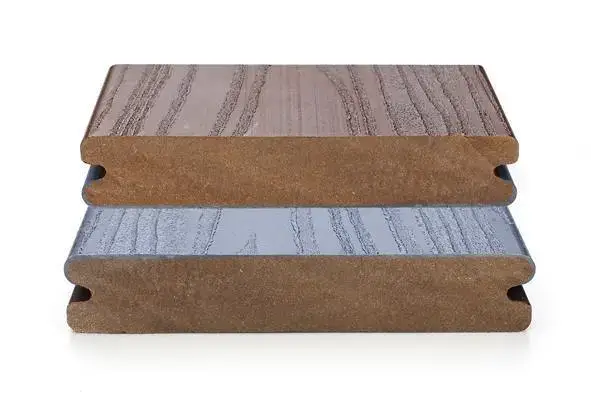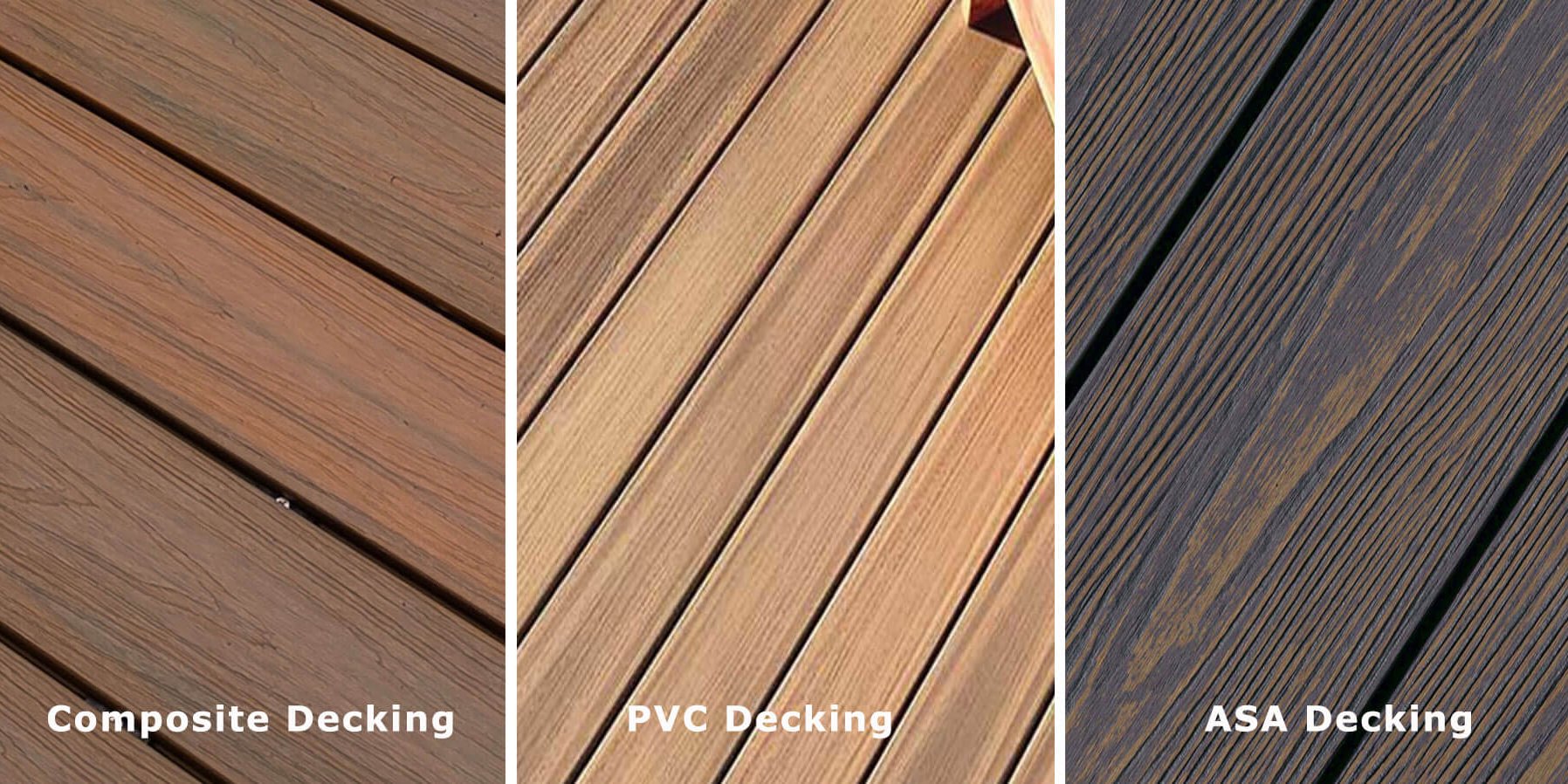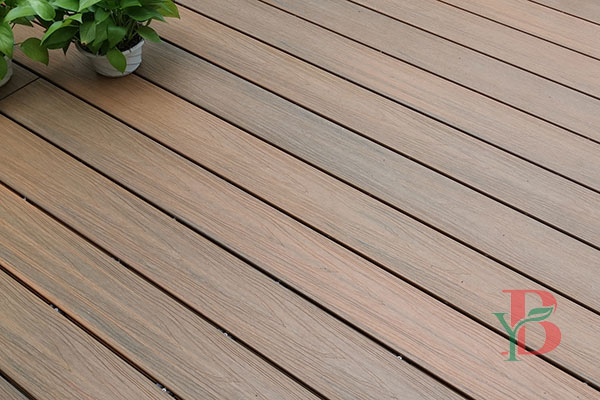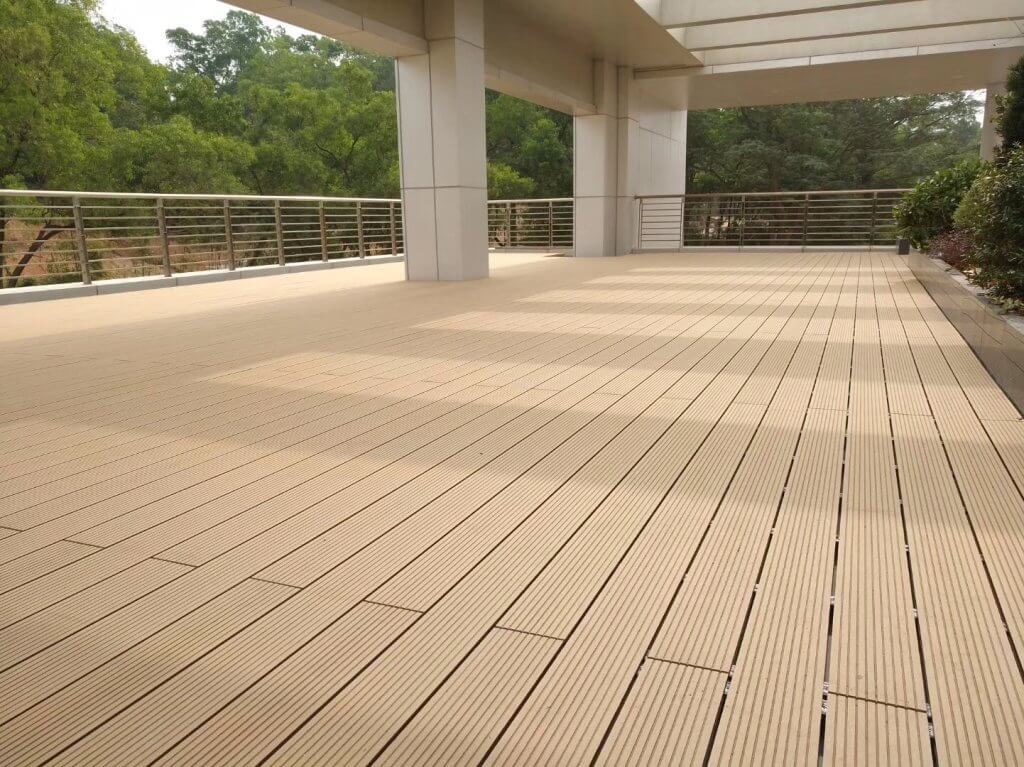When building or renovating a deck, choosing the right material can be a tough decision. The three most popular options are composite decking, PVC decking, and ASA decking. While all three are designed for durability, low maintenance, and long-lasting beauty, each material has unique benefits and potential drawbacks. In this article, we’ll break down the key decking comparison between these three decking materials, helping you make an informed choice for your next outdoor project.
What is Composite Decking?
Composite decking is made from a combination of wood fibers and plastic. This blend provides a material that mimics the look of wood while offering the durability and low-maintenance qualities of plastic. Composite decking is designed to resist fading, stains, and mold, making it a popular choice for homeowners seeking a natural look without the hassle of wood care.
- Early Uncapped Composite Decking (1995-2008)
- Capped Composite Decking (2008 – Present day) —Capped decking offers extra protection in the form of a hard outer shell, which provides added protection against the elements and everyday living.
Pros and Cons of Composite Decking:
Pros
- Natural Appearance: Offers a wood-like look that appeals to those who want a more traditional aesthetic.
- Low Maintenance: No need for staining or sealing. Just occasional cleaning is required.
- Durable: Resistant to fading, scratching, and moisture.
- Eco-Friendly: Made from made from recycled wood fibers and plastics, making it a greener option.
Cons
- Heat Retention: Can get hot under direct sunlight, which may be uncomfortable to walk on.
- Price: Composite decking is typically more expensive than wood and some other alternatives.
Bongywood WPC has developed a variation collection of composite decking which offers the aesthetic of natural timber and the benefits of long-lasting beauty with minimal maintenance, you will have many colors and grain patterns to choose from that you are sure to be happy with your choice.
What is PVC Decking?
PVC decking is made entirely from polyvinyl chloride (PVC) plastic. This decking option is 100% plastic, meaning it’s highly resistant to water, mold, mildew, rot and insects. PVC decking is known for its clean, modern look and low-maintenance, it also does not require staining or sealing.
- PVC Decking (2009 – Present day).
Pros and Cons of PVC Decking:
Pros
- Waterproof: PVC is impervious to water, making it an excellent option for humid climates or areas with frequent rain.
- Low Maintenance: No staining or sealing required; easy to clean.
- Durability: Extremely resistant to scratches, stains, and mold.
Cons
- Plastic Feel: Some people feel that PVC lacks the warmth and natural appearance of wood or composite options.
- Heat Retention: Like composite decking, PVC can become hot in direct sunlight.
- Price: PVC decking can be on the expensive side, often more costly than wood and some composite options.

What is ASA Decking?
ASA decking (Acrylonitrile Styrene Acrylate) is a newer material that combines the durability of plastics with the UV resistance of acrylic. ASA decking has quickly become popular due to its superior color retention, UV resistance, and scratch resistance. It provides the look of natural wood with all the benefits of synthetic materials.
- ASA Decking (2014 – Present day), making it a relatively new option in the decking market compared to PVC and composite decking.
Pros and Cons of ASA Decking:
Pros
- Superior UV Resistance: ASA decking stands out for its exceptional resistance to fading from the sun. This makes it ideal for areas with intense sunlight.
- Scratch and Stain Resistance: Highly resistant to surface scratches and stains.
- Wood-Like Appearance: ASA decking offers a more realistic wood-like finish than PVC and has a more textured surface.
- Low Maintenance: Requires minimal upkeep and doesn’t need staining or sealing.
Cons
- Cost: ASA decking tends to be more expensive than PVC and composite decking due to its premium features.
- Availability: Still relatively new, ASA decking may not be as widely available in all markets.
- Limited Color Range: While durable, ASA decking may have fewer color options than PVC.

Composite Decking vs. PVC Decking vs. ASA Decking: Key Differences
| Feature | Composite Decking | PVC Decking | ASA Decking |
| Material Composition | Wood fibers and plastic | 100% PVC plastic | Acrylonitrile Styrene Acrylate (ASA) plastic blend |
| Durability | Very durable, resists fading and staining, but may scratch | Extremely durable, highly resistant to moisture and wear | Extremely durable, resistant to fading, scratches, and staining |
| Maintenance | Low maintenance, occasional cleaning | Very low maintenance, easy to clean | Very low maintenance, easy to clean |
| Moisture Resistance | Good, but not completely waterproof | Excellent, completely water-resistant | Excellent, resistant to water and mold growth |
| UV Resistance | Moderate, can fade over time | Good, but may fade over extended periods | Excellent, does not fade or discolor easily under sunlight |
| Aesthetic Appeal | Wood-like finish, offers a traditional look | Sleek, modern, but may look more synthetic | Wood-like finish with a more natural texture and appearance |
| Heat Retention | Can get hot under direct sunlight | Can get hot under direct sunlight | Generally better heat resistance compared to PVC |
| Price | More affordable than PVC and ASA, but pricier than wood | Typically more expensive than composite and wood | Generally the most expensive option |
| Environmental Impact | Often made with recycled materials | Limited environmental benefits, primarily synthetic | Limited environmental benefits, primarily synthetic |
Frequently asked questions related to the decking comparison
1. What is the main difference between composite, PVC, and ASA decking?
- Composite decking is made from a blend of recycled wood fibers and plastic, offering a natural wood look with enhanced durability and reduced maintenance.
- PVC decking is made entirely from plastic (polyvinyl chloride), making it highly resistant to moisture, insects, and rot, but it may lack the natural look of wood.
- ASA decking is a type of plastic decking similar to PVC, but with added resistance to UV rays, better color retention, and superior fire resistance. It’s a most expensive and premium choice with excellent durability.
2. What are the cost differences among composite, PVC and ASA decking?
The prices for composite, PVC, and ASA decking can vary depending on the brand, style, and design, but here’s a general breakdown:
- Composite decking is typically made from recycled wood fibers and recycled plastic, which can make it more affordable upfront than PVC and ASA, but may require more maintenance over time.
- PVC decking is made entirely of plastic, which makes it resistant to moisture and insects, but tends to be more expensive than composite while offering lower long-term maintenance costs.
- ASA decking tends to be the most expensive option because it’s a premium material. It offers superior UV-stability, color retention and fire resistance compared to the other two options. Because of its high-end quality, it can be pricier.
So, if budget is a major consideration, composite decking will generally be the least expensive. But if you want higher performance and durability, ASA
3. Composite, PVC and ASA decking, which material is better for fire resistance?
ASA decking is the most fire-resistant, followed by PVC decking. Composite decking tends to be less fire-resistant, as it’s a mix of wood and plastic, and can catch fire more easily.
- Composite Decking: Varies depending on the manufacturer, but typically, composite decking made from wood and plastic is more prone to burning than PVC or ASA. Most composites are classified as C-Class or D-Class fire rated. Some manufacturers treat their composites with flame retardants to achieve B-class rating, but they still tend to catch fire more easily than non-combustible materials.
- PVC decking: it is generally more fire-resistant than composite decking. It’s made from a plastic material, which is inherently less likely to catch fire compared to wood or composite options. However, PVC can still melt or warp under extreme heat.
- ASA Decking (Acrylonitrile Styrene Acrylate) often combines the benefits of plastic with enhanced durability and weather resistance. While ASA decking is generally considered to have good fire-resistant properties, specific fire ratings may not be as widely reported or standardized compared to PVC and composite options.
4. Which decking is most resistant to mold and mildew?
PVC and ASA decking are both highly resistant to mold and mildew because they are non-porous. Composite decking can be prone to mold growth if not maintained properly, as the wood fibers can retain moisture.
5. How do these materials compare in terms of aesthetics?
Composite decking often provides a more natural wood-like appearance compared to PVC, which can look more plastic-like.
ASA decking is known for its superior aesthetic appeal, closely resembling natural wood without the drawbacks of fading or moisture absorption.
6. Is there a significant difference in thermal expansion between these materials?
Yes, composite decking generally has a lower thermal expansion coefficient compared to PVC, making it less susceptible to warping in high temperatures. PVC can expand significantly under heat, which may lead to structural issues over time.
7. Which decking is the best for low maintenance?
PVC and ASA decking are both low-maintenance materials. PVC requires the least maintenance since it doesn’t need staining or sealing and is resistant to mold and mildew. Composite decking requires occasional cleaning, as it can accumulate dirt and debris in the wood fibers.
8. Is composite, PVC, or ASA decking more eco-friendly?
- Composite decking is typically considered the most eco-friendly option because it’s made from recycled wood fibers and plastics.
- PVC decking is made entirely from plastic, which can be less environmentally friendly.
- ASA decking is also a plastic-based material, but its environmental impact will depend on the manufacturing process.
Which Decking Material Should You Choose?
- If you want a natural wood look with low maintenance: Composite decking is an excellent choice. It’s a great balance of aesthetics, durability, and environmental friendliness.
- If you prioritize water resistance and low maintenance: PVC decking is a solid option. It’s completely waterproof, making it ideal for wet climates, but it may lack the warm, natural look some homeowners desire.
- If UV resistance and a wood-like appearance are crucial: ASA decking could be the best choice. It offers superior UV protection, keeping your deck looking vibrant and fresh for years, though it comes at a higher price point.
Conclusion
Choosing the right decking material depends on your needs and preferences. Composite decking offers a balance between aesthetics and maintenance, while PVC decking excels in water resistance and ease of upkeep. For those who want the best UV protection and a more natural wood-like finish, ASA decking is a premium choice. Each material has its unique advantages, so weigh your priorities to select the one that suits your outdoor living space best.
Reference:
- Rings End: PVC Decking vs. Composite
- TimberTech: PVC vs. Composite Decking
- Decks.com: Differences Between PVC & Composite Decking
- TimberTech Advanced PVC offers both beauty and fire resistance
Bongywood Wood Plastic Composite
Guangdong Bongywood New Building Materials Co.,Ltd. is a professional manufacturer specializing in the R&D, production and sales of WPC (Wood Plastic Composite) materials, our products include: composite decking, capped composite decking, WPC Wall Panel, WPC Railing & Fencing, WPC Pergola & Gazebo, WPC Chairs & Bench, WPC Flower Planter Pots etc.










